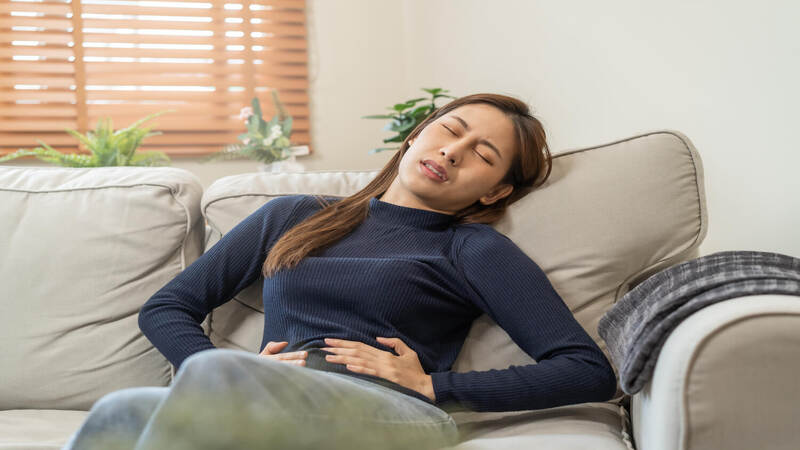
Ovarian hyperstimulation is a syndrome that usually occurs in women who are taking fertility medications to boost egg production, particularly in vitro fertilization (IVF) treatment. Since IVF medications aim at the development of eggs in the ovary for fertilization, particularly ovulation, one cannot say for sure how much injectable medicine you might need. The excess of this medicine can result in too many hormones in your ovary, further leading to ovarian hyperstimulation syndrome.
What Causes of Ovarian Hyperstimulation Syndrome?
The main cause of ovarian hyperstimulation syndrome (OHSS), is fertility drugs. Generally, fertility drugs are used to produce egg sacs, but sometimes they can cause hyperstimulation of ovaries. This happens when the presence of the drugs is more than what your body can handle.
As a result, the level of hormones responsible for producing eggs in the ovary increases, and too many hormones cause the ovaries to get swollen or enlarged. These enlarged ovaries then start releasing chemicals into the bloodstream, which ultimately start leaking fluid into the body.
Sometimes that leaked fluid reaches the heart, lungs, and various other organs and becomes a serious health problem resulting in grave consequences. In the majority of the cases, it occurs during fertility treatment when an injection of human chorionic gonadotropin (hCG) is given. In very rare cases, OHSS can happen when women are taking oral medications during fertility treatments.
Symptoms Of Ovarian Hyperstimulation Syndrome (OHSS)
The common symptoms associated with OHSS are abdominal swelling, pain, nausea, and vomiting, On the basis of clinical manifestation symptoms of OHSS are divided into three categories:
Mild OHSS
Women usually experience
- Mild abdominal swelling, pain or discomfort
- Mild nausea
- Diarrhea
- Vomiting
Moderate OHSS
Most of the symptoms are the same as mild OHSS but with greater intensity
- Increased abdominal pain
- Increased abdominal girth
- Nausea
- Urine is dark and very less
- Vomiting & diarrhea
- A sudden increase in weight
Severe OHSS
In severe hyperstimulation, symptoms become worse and you may experience:
- Intense abdominal pain
- Rapid weight gain
- Marked abdominal distension
- Severe nausea and vomiting
- Urine has stopped or very less and much darker
- Respiratory difficulties
- Extreme thirst
These symptoms can often be noticed between 10 days of taking an injectable medication to induce ovulation. Ovarian hyperstimulation syndrome is less pronounced in women who take fertility drugs by mouth, such as clomiphene (Clomid, Serophene). In the event that you do become pregnant, these symptoms may last longer and may worsen as well.
What Are The Risks Of Ovarian Hyperstimulation Syndrome?
The Risk of OHSS is mainly in the women who:
- Are of very young age
- Have a polycystic ovarian condition
- Take a higher dose of gonadotropins
- Have a previous history of OHSS
- Low weight
- Have multiple pregnancies (twins-triplets)
- A history of migraines or a previous episode of OHSS
In the majority of the cases, mild symptoms are observed in almost every woman who is taking the fertility treatment, but they generally disappear after some time, you should consult your doctor if symptoms increase in intensity or persist for a longer period of time.
Treating Ovarian Hyperstimulation Syndrome
The diagnosis of ovarian hyperstimulation syndrome is based on a physical exam, an ultrasound, and a blood test. An increase in weight and waist size, bigger ovaries with large fluid-filled cysts, and certain blood tests will enable your doctor to determine whether you have OHSS and the further course of action.
The treatment is aimed at keeping you comfortable, and avoiding complications, very much so if you have conceived already. A week or two is all it takes to resolve OHSS unless you are pregnant. Pregnancy may increase your resolution time with OHSS.
In Mild Cases
Management is quite simple in mild cases –
- Drink lots of clear fluids like water and juices
- Avoid sexual intercourse
- Reduce difficult physical activities like lifting heavy objects and exercise
In Moderate Cases
Basic management is similar to a mild case like drinking plenty of water and avoiding sexual intercourse, but apart from it there are few others steps which must be taken:
- Go and see your doctor immediately
- Check your weight daily – if possible, keep the proper record
- Record the urine frequency and color
In Severe Cases
If you have severe symptoms of OHSS then seek immediate health advice from your doctor. It can be possible that you may need to be admitted to the hospital for monitoring and further treatment, including intravenous (IV) fluids.
Hospitalization may only be required based on the severity of symptoms, analgesic requirements and other social considerations like unavailability of support or assistance
Controlled Ovarian Hyperstimulation
Controlled ovarian hyperstimulation (COH) involves careful monitoring of fertility agents that are designed to induce ovulation through fertility medications via IVF. The release of multiple follicles can be used in in vitro fertilization (IVF).
This can be achieved by either or both injectable or oral-assisted fertility medications. For women with irregular menstruation cycles, COH aims at producing 1 mature follicle and restoring normal ovulatory function. In a woman whose cycles are regular and ovulation happens every month, COH increases the pregnancy rates by producing 2-3 mature follicles every month.
This is also known as a process to ‘superovulate’ the women, as pregnancy chances increase from once a month to 2 to 3 times a month. Though the success rate is to the tune of 20%, a lot is dependent on the age and fertility diagnosis of the couple.
Please keep in mind there is no specific treatment for OHSS and there is no treatment that can reverse the OHSS. Ovarian hyperstimulation syndrome generally resolves on its own within a week or two and treatment mostly includes keeping you comfortable, decreasing ovarian activity, and avoiding complications.
